Decision making practices – Ideas for Players
How often do you work on improving your decisions making skills?
You may do lots of technical practice & physical sessions, I’m sure you do.
But how often do you specifically focus on improving your anticipation & thinking skills?
Your aim must be to develope players that make ….
great decisions, anticipate, plan and intentionally influence rallies
The problem is that is easy for the coach to set a technical or physical session. It’s generally all about sets, reps and information (do this, try this, etc).
I presume you can identify with this type of work. It’s easy to understand and see the results.
Before you try out these tips it’s important to understand what I mean by decision making
I certainly don’t just mean deciding where to hit the shuttle. Yes, that is important but it’s far more than that.
– – – – – – – – – – – – – – – – – –
6 elements I think you need to become great at
- Understanding what could happen when you play your stroke: anticipating how it will affect your opponent
- Identifying where your opponent is strong and weak
- Be able to ‘see’ / ‘feel’ what your opponent is about to do, “to read your opponents preparation”
- Accepting that sometimes you will feel uncomfortable and may not make the right decision
- Accepting that you can intentionally influence practice rallies, even technical practices
- Assessing yourself and making choices about how you feel (in many different aspects)
How many of these do you believe that you are good at?
Are you able to develop these in your practices?
Assess your Practice
Don’t forget to try the quiz at the end of the post. It will help you assess how much of your current practice is good for developing your on-court decision and anticipation skills.
 Decision-making skills are subtle skills
Decision-making skills are subtle skills
They are essential skills but they can be difficult to measure and difficult to see improvements. However, they often the difference between players on court.
During a match have you ever felt that it was easy to ‘read’ what the opponent was doing or possibly going to do? Could you comfortably read/feel (anticipate) almost everything that was about to happen?
Maybe it better to ask if you have ever played someone and had no idea of where your opponent was going hit the shuttle. You looked over the net but couldn’t ‘see or feel’ anything.
So how should you work on these skills
The following advice is for you and your coach to think about. Hopefully, it will influence your practice and help your decision-making skills
- Play MATCHES …. lots of matches
- Ensure that you focus on anticipation and try to influence the rallies within a practice
- Don’t just be a ‘passenger’ and allow the feeder to dictate
- Start most of the practices yourself. You’ll need the shuttle to start.
- Think about anticipating before they strike the shuttle, it’s essential
- Use 1 shuttle and play mini rallies. Maybe have both players hitting and moving, learning.
- Ask feeders to try and beat you. Expect to be beaten by them, but also please make it tough for the ‘feeder’.
- Expect errors as you try to intentionally influence/anticipate the outcomes “error is the price of skill”
- Only use real game-like situations. Playing a backhand net followed by a forehand block would never happen! (what is one or both is a shadow movement, it’s even worse)
- Try to reduce the amount ‘knowns’ in any practice. Smash kill x 15 will not improve your anticipation. Static feeding may even harm/limit your skills
- Please don’t ask for perfect feeding. When you can, capitalise on different feeds, otherwise learn to adapt
– – – – – – – – – – – – – – – –
Warnings
Here are a few things to consider that may explain why you don’t anticipate as well as you would like
You don’t play enough matches in Practice
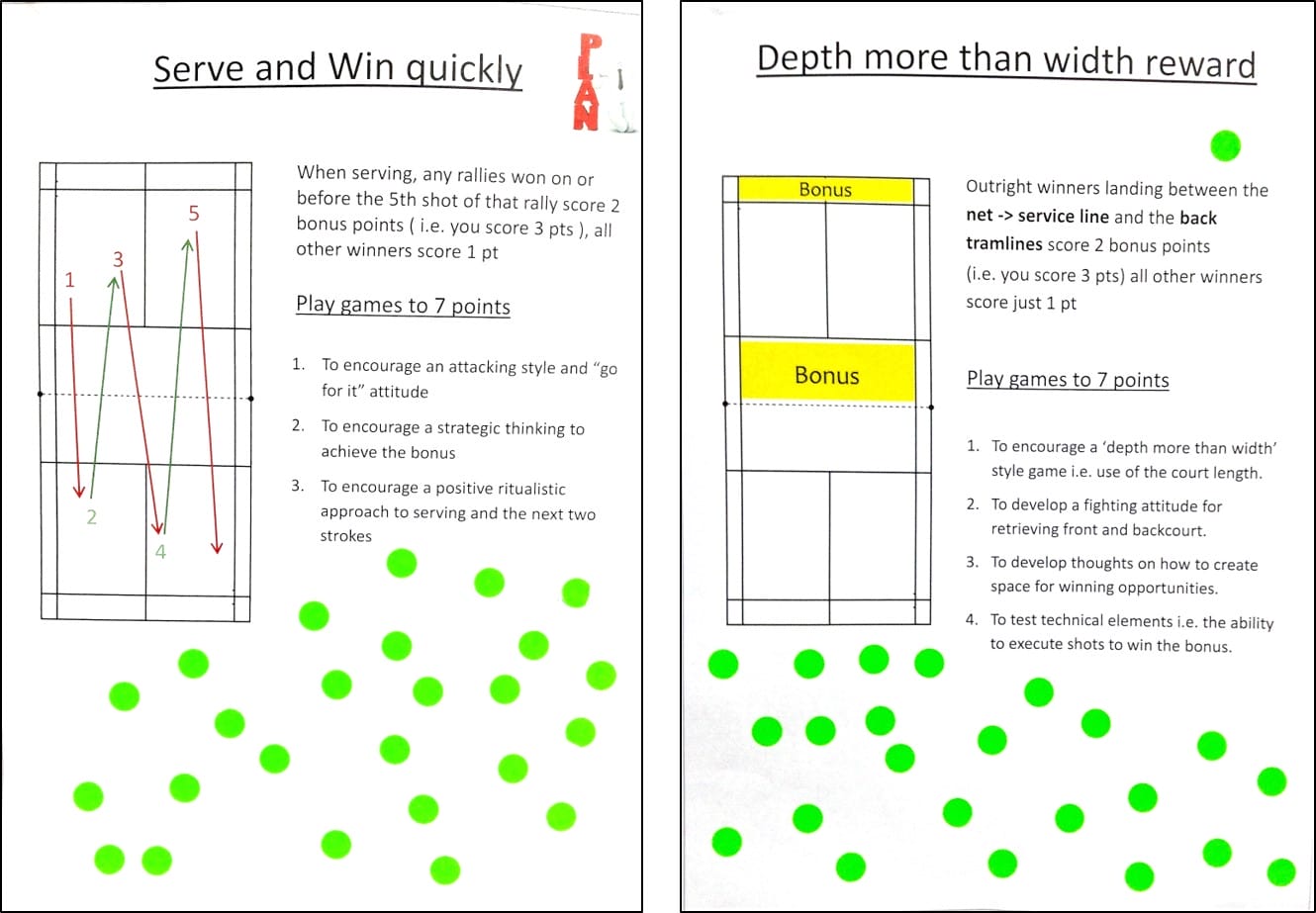 This is a must do! Play matches, all sorts of matches, 1v1, 2v1, even 3v1 will help!
This is a must do! Play matches, all sorts of matches, 1v1, 2v1, even 3v1 will help!
I especially like both Conditioned games and Open Challenge matches where it’s important to try and win!
You don’t try to win (or gain an advantage) in Technical Practice
If you are just happy hitting shuttles over, you are missing out.
There is so much more to practice than just returning the shuttle and ‘waiting’ for the next. Please don’t just hit with an empty mind. Always be thinking about seeking and imagining creating an advantage for yourself.
Having an ‘empty mind’ is not acceptable.
Multi shuttle
If the majority of your practice is multi-feeding then I believe you will become good at reacting and chasing. Is that your aim? Multi is great for physical development but not for game decisions.
However, reacting is not the same as anticipating and influencing.
- Using static repetitive feeding will help you technically but it will not develop your game anticipation/influencing skills.
- There need to be times when you must practice intentionally moving or reacting to something you have done ie the stroke you hit, the return you think (or want) your opponent to play.
- You can influence your opponent in a game but you can’t in multishutle, especially if they don’t return your shot!
Having the speed to chase a shuttle is never fast enough if the correct anticipation element is missing
The important point here is the context of the feeding. Knowing where the next feed will be as in a multi Smash-Kill practice will limit your need for decision making and therefore limit the rate of your development in these thinking skills.
It will make you faster, physically better, but better at influencing, anticipating…. I don’t believe so.
It doesn’t help either if the feed is random and from a static position. Be careful if this is the majority of your training.
You need to become great at intentionally influencing what the opponents next shot could be
This means checking if the stroke you’ve hot does give you the putcome, the advatage you want
– – – – – – – – – – – – – – – –
Mistakes and Perfection
Please don’t try for “Perfect Practice”, especially if you are aiming to improve your anticipation/influencing skills
In practices where you have to anticipate and make decisions, you will make more mistakes than most of your other practices. How you react to these ‘mistakes’ will have an impact on your development.
It’s almost impossible to try for ‘perfection’ in practices that are designed to improve all the aspects of decision making.
In fact, if you are not making mistakes then the practice will not be helping you.
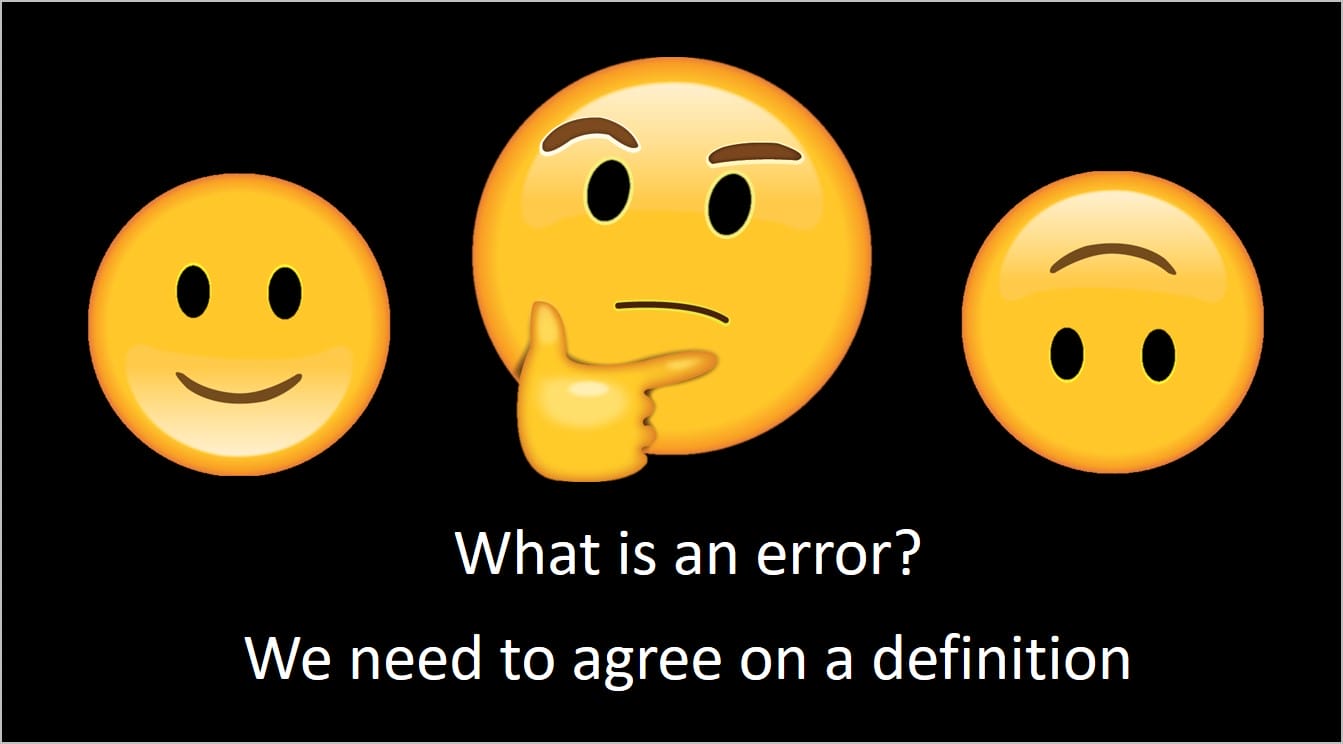
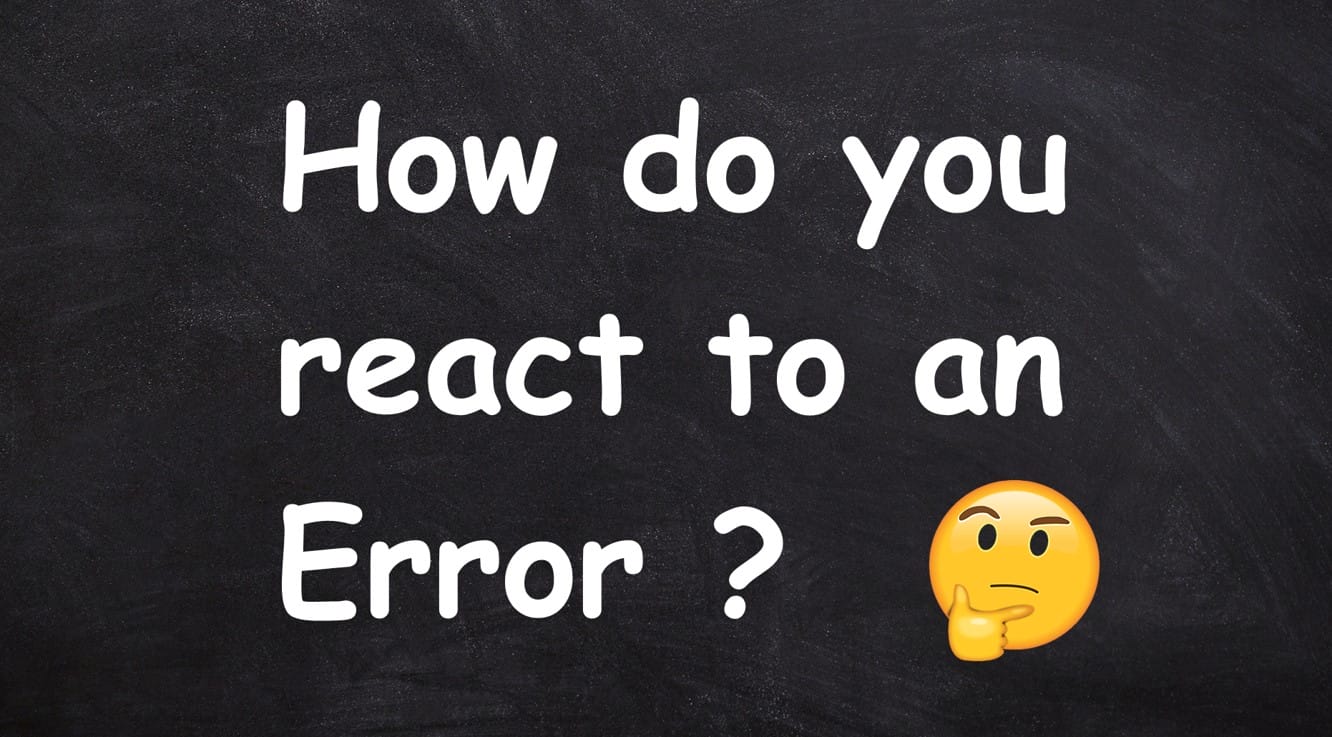
– – – – – – – – – – – – – – – –
Want to read more?
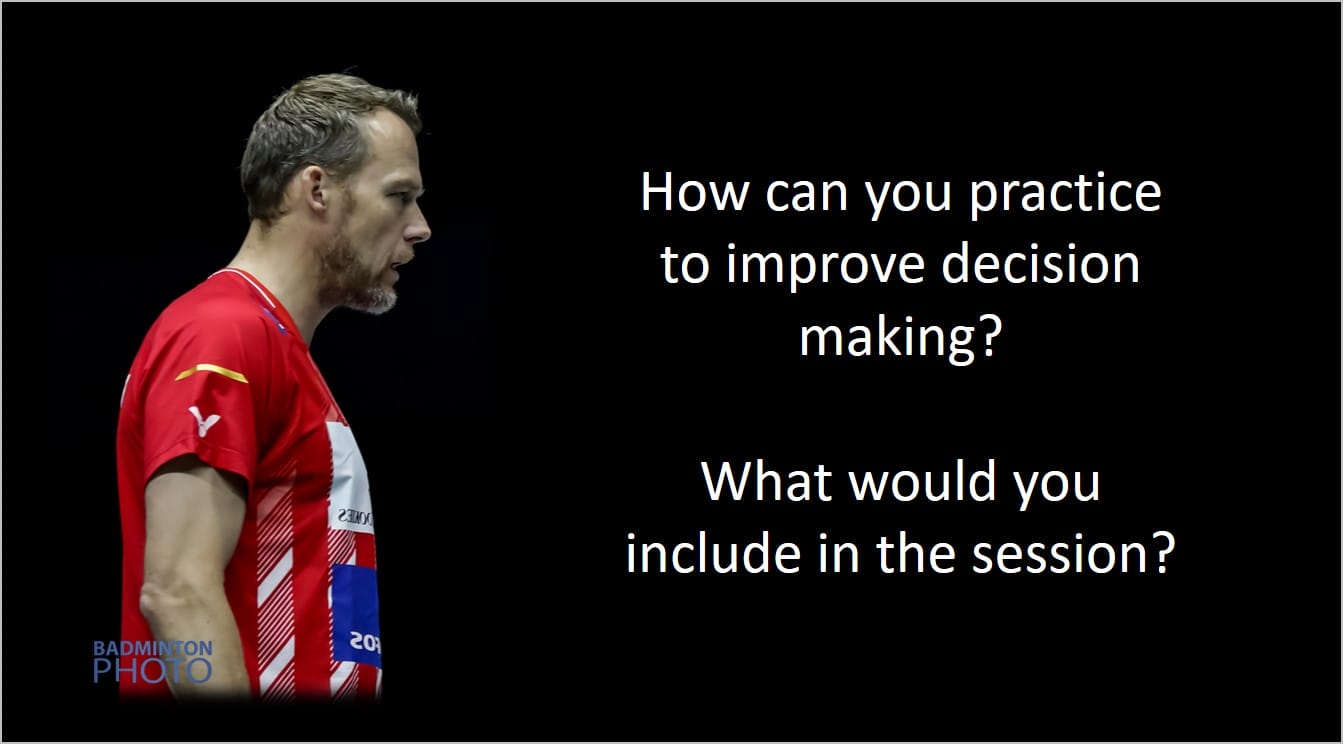
– – – – – – – – – – – – – – – –
Quiz Time
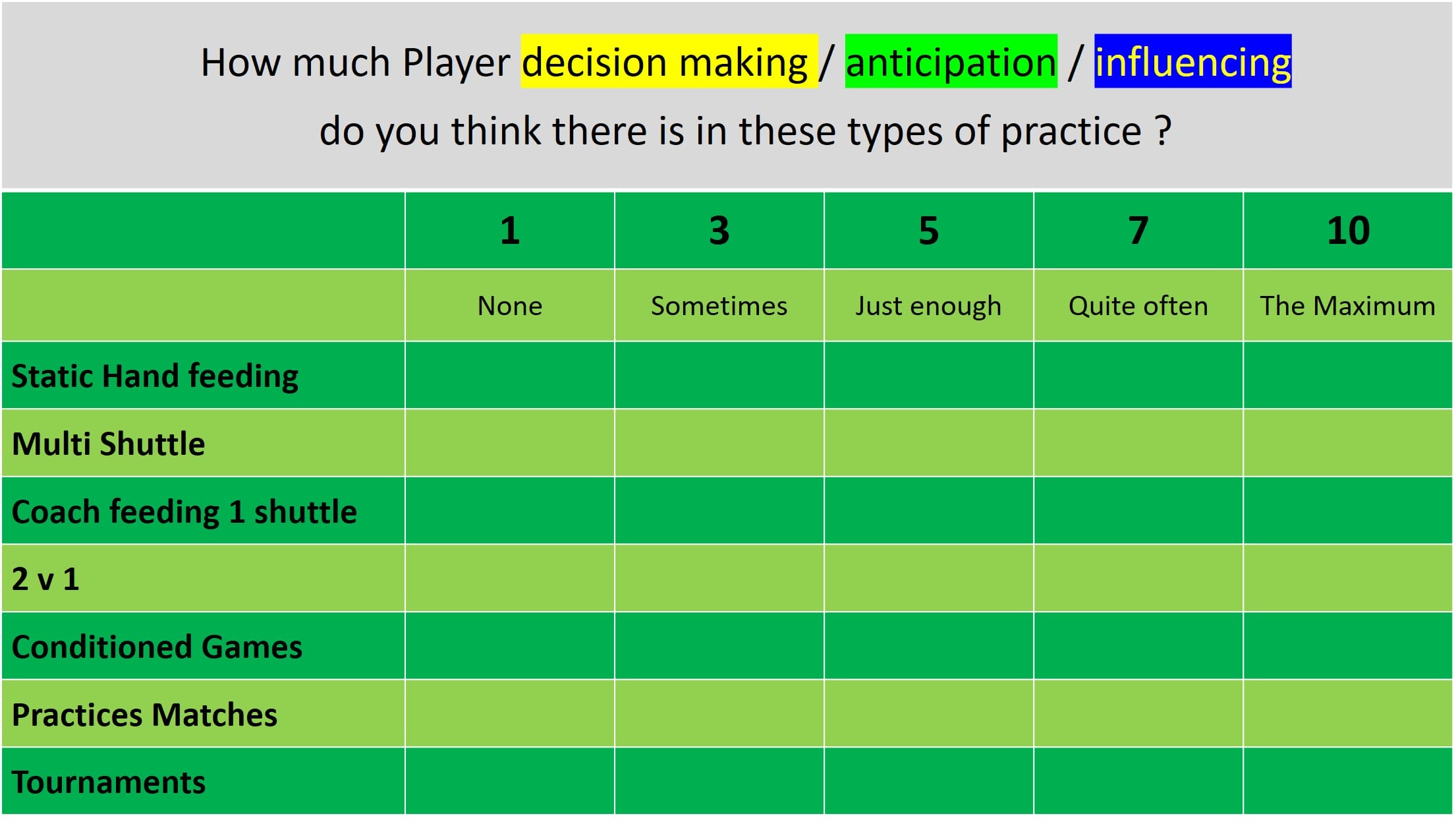

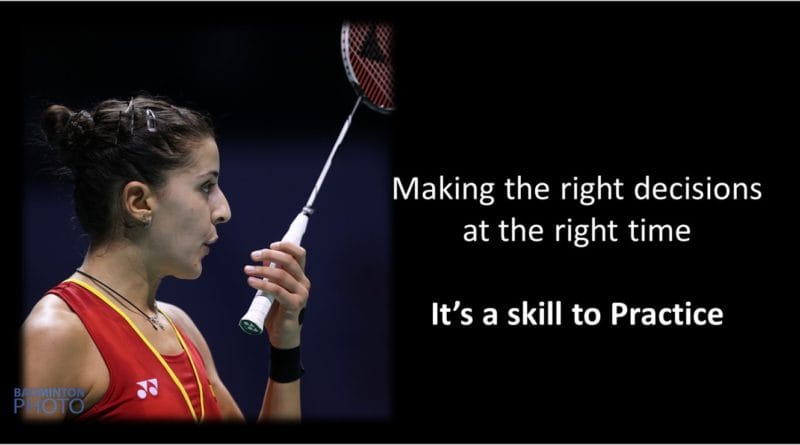
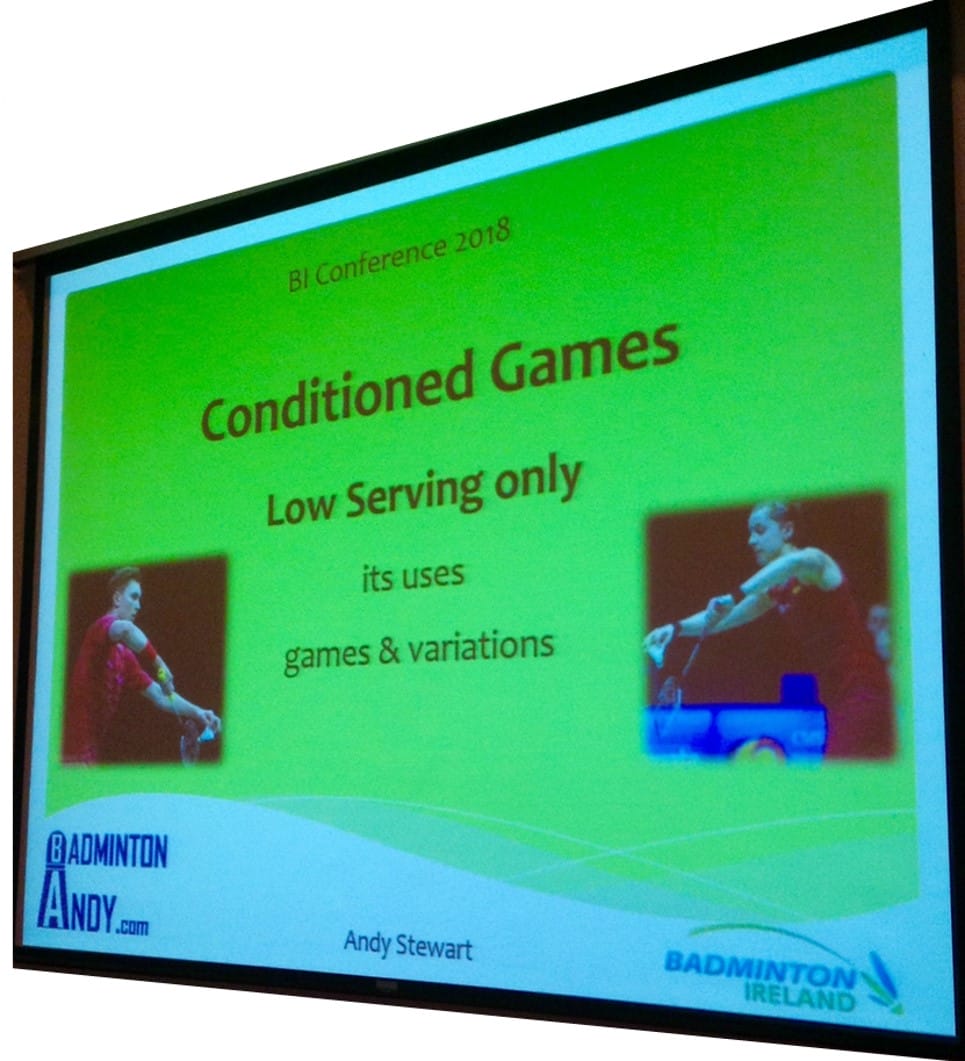 Decision-making skills are subtle skills
Decision-making skills are subtle skills
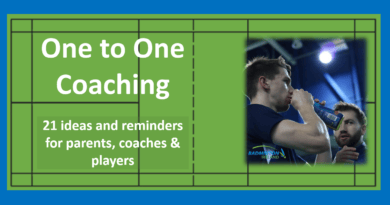

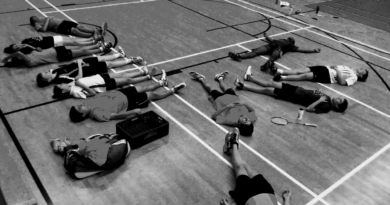
Hi Andy,
I liked the way this piece was directed at players because they are the ones who need to use their imaginations and be active in the training process if they want to become successful.
Far too many players go through the motions in training without taking any mental control.
Being a ‘passenger’ as you call it is a great description! The best players in my experience are able to self teach and at the same time have the ability to take advice from coaches and filter the useful parts. They are not passive participants in training, they are open and keen to discuss but they also know when to listen and take advice.
Two players can do exactly the same exercise and one will improve by doing it and one will gain nothing based on what they are thinking.
Example: doing multi-feed straight net.
Player 1 moves backwards and forwards moving before the feeder’s throw and keeps the same rhythm throughout paying no attention to their movement timing.
Player 2 imagines the scenario in the game that he wants to practice, he remembers at the last tournament making some mistakes in this area so he watches the video of the match and gets a clear picture in his head putting the practice into a real situation, he starts from a defence position just like in the match and asks his feeder to throw overarm like a cross drop.
After each shot, he recovers in a racket-leg forward attacking stance ready to kill the next shuttle at the net or cover the high lift before returning to the defensive starting position and then making an explosive first step after the feeder throws the shuttle. He then asks the feeder to take a step forward to the net sometimes so that he has to take the decision to flick rather than net.
I agree that there is still a place for predictable repetition of skills in order to focus on technical development and gain confidence in playing a specific shot.
The tricky part is how much of each one to do in training at what stage in the players development, and during which period in the season.
This is where player and coach need to communicate well about what they need and when. If the players are passive ‘passengers’ they will never find the right training to optimise their development.
Great topic!
Thanks for the post…. it made me think 🙂